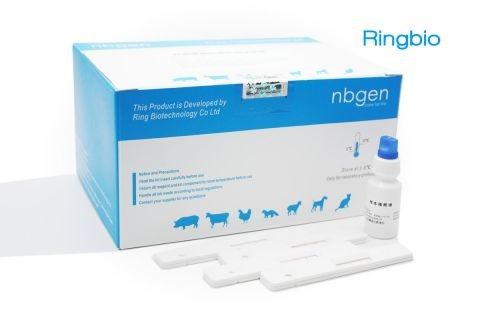
This Seneca Virus Fluorescent RT-PCR Kit uses Taqman fluorescent probe to amplify and detect Seneca virus gene, which can be applied to the detection of Seneca virus nucleic acid in tissue samples such as animal tongue, nose and hoof, pharyngeal mucus, tonsils, lymph nodes and muscles.
Seneca virus (also known as Seneca Valley Virus, SVV) is a genus of viruses in the order Picornavirales, in the family Picornaviridae. Pig and maybe also cow serve as natural hosts. There is only one species in this genus: Seneca virus A. Seneca virus is a replication-competent oncolytic picornavirus.
Naturally occurring antibodies against the virus have been detected in swine, cattle, mice, and a single human sample, though the virus is not known to cause disease in humans. Pathogenicity in swine remains unclear. Outbreaks of idiopathic vesicular disease have been linked to SVV in the absence of other identified etiologic agents and also during concurrent infection with porcine circovirus and porcine enterovirus. In contrast, the virus has also been identified in healthy pigs, and experimental infection has failed to produce clinical signs thus far. Proven methods for prevention and control of SVV are lacking. Vaccination and stamping out have been used to control FMD, which is caused by a similar virus.
Key facts of this Seneca Virus Fluorescent RT-PCR Kit
- Ready to use kits for veterinary labs.
- No special instrument required.
- Only less than 60min to get the result.
- Low cost with high sensitivity
Performance of the Seneca Virus Fluorescent RT-PCR Kit
This kit uses Taqman fluorescent probe to amplify and detect Seneca virus gene, which can be applied to the detection of Seneca virus nucleic acid in tissue samples such as animal tongue, nose and hoof, pharyngeal mucus, tonsils, lymph nodes and muscles.
Seneca Virus Fluorescent RT-PCR Kit Component
- PCR relation solution
- Negative Control
- Positive Control
- Enzyme Mix
Extended Reading
- Swine Health Information Center, SHIC, Seneca Virus



